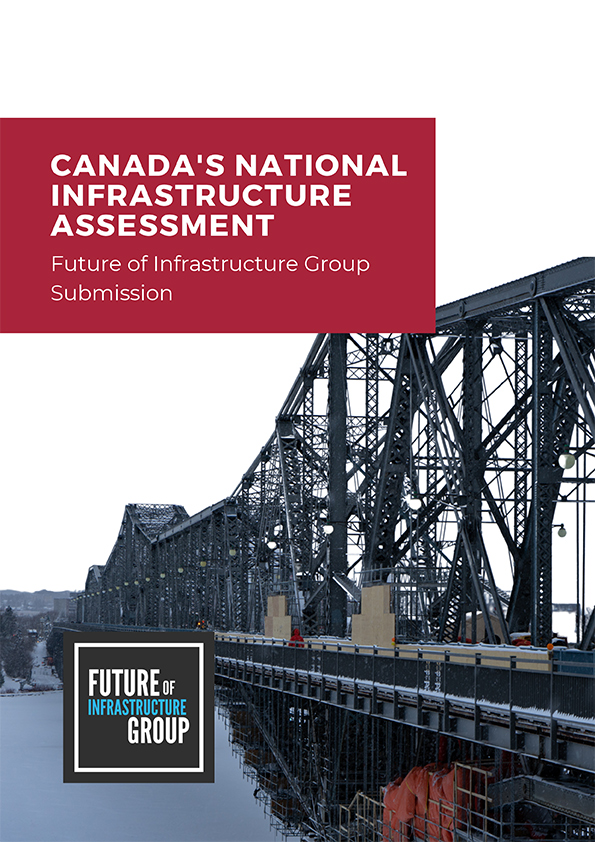Canada’s National Infrastructure Assessment
Published December, 2021
The National Infrastructure Assessment is an important first step that will help lay out a comprehensive approach to build an evidence-based, independent approach to planning and delivering infrastructure across the country.
Importance of a Fresh Approach
Across Canada there are unprecedented levels of investment in infrastructure. These investments will shape Canada’s long-term success in terms of economic growth, improving the quality of life and promoting equity, and mitigating environmental impact.
Public infrastructure is delivered by the public and private sectors together and a more evidence-based, collaborative approach would present a win-win. Countries like Australia, the UK, and New Zealand have recognized that the status quo around planning, procuring, and delivering infrastructure is unsustainable and have used assessments as an early step towards building broad understanding of the issues faced before developed strategies, plans, and incremental changes to get greater value for public investment.
Although the Federal Government is only responsible for delivering and maintaining a small proportion of national infrastructure, it has a key role to play in setting a national direction around reform in the overall approach to infrastructure delivery.
As evidenced by the work of the Australian Government, and in particular Infrastructure Australia, a strong direction provided a basis that states, and territories could build on. This starts with having best practice processes and governance for Federal projects and using a range of tools to encourage reforms at other levels of government that will ensure that they see greater impact from their investments.
Recommendations
- Vision: Canada needs to set a national direction for the role infrastructure will play in meeting wider societal, economic, and environmental challenges and the future shape of the sector itself.
- Planning: Produce long-term capital plans developed by independent agencies/experts and driven by data. Publish regularly updated funded and unfunded national project pipelines and encourage stable annual investments.
- Prioritization: Use a clear, standardized methodology and transparent business case approach for prioritizing projects, developed by independent expert-led agencies and shared publicly.
- Procurement: Develop a project initiation approach at the Federal level to shape planning, procurement, delivery, and financing. Simplify procurement to reduce bid costs and develop national guidance on selecting the right delivery model and effective evaluation criteria for different types of projects.
- Delivery: Identify the issues faced in project delivery and goals for reform at all levels of government to ensure investments deliver greater value and encourage innovation and the adoption of technology to drive greater efficiency.
- Funding and Financing: Screen projects to identify where private finance could add value and conduct analysis of the benefits of different delivery models to inform a roadmap for identifying the best delivery models and financing approach for different project types.
- Operations and Maintenance: Ensure all levels of government have asset management plans and dedicated budgets for operations and maintenance as part of project business cases, and consider lifecycle and user experience within procurement.

